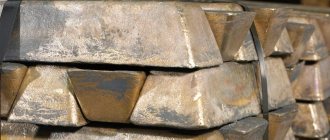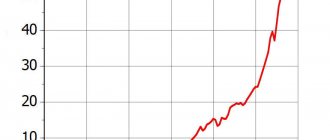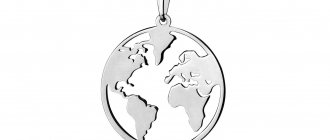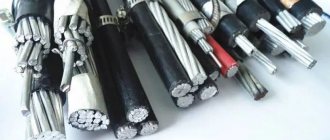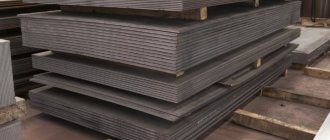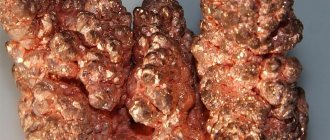Copper refining.
To obtain copper of the required purity, blister copper is subjected to fire and electrolytic refining. In this case, in addition to removing impurities, noble metals can also be extracted.
In fire refining, blister copper is loaded into a flame furnace and melted in an oxidizing atmosphere. Under these conditions, those impurities that have a greater affinity for oxygen than copper are removed from copper into the slag.
To speed up the refining process, compressed air is supplied to the bath of molten copper. Most impurities in the form of oxides go into the slag (Fe2O3, Al2O3, SiO2), and some impurities are removed with gases during refining. During fire refining, noble metals remain completely in the copper. In addition to noble metals, copper contains impurities of antimony, selenium, tellurium, and arsenic in small quantities. After fire refining, copper of 99–99.5% purity is obtained. To remove these impurities, as well as to extract gold and silver, copper is subjected to electrolytic refining.
Electrolysis is carried out in special baths lined inside with lead or other protective material. Anodes are made from fire-refined copper, and cathodes are made from thin sheets of pure copper. The electrolyte is a solution of copper sulfate. When a direct current is passed, the anode dissolves and the copper goes into solution. Copper ions are discharged at the cathodes, depositing a strong layer of pure copper on them.
Precious metal impurities present in copper fall to the bottom of the bath in the form of a residue (sludge). After electrolytic refining, copper with a purity of 99.95 - 99.99% is obtained.
Converting matte
Conversion of matte is carried out in copper smelting converters (Figure 44) by blowing it with air to oxidize iron sulfide, converting iron into slag and separating blister copper.
Converters have a length of 6 - 10 m and an outer diameter of 3 - 4 m. Pouring molten matte, draining the melting products and removing gases is carried out through a neck located in the middle part of the converter body. To blow through the matte, compressed air is supplied through tuyeres located along the converter generatrix. In one of the end walls of the converter there is a hole through which pneumatic loading of quartz flux is carried out, which is necessary to remove iron into the slag. The purging process is carried out in two periods. In the first period, matte is poured into the converter and quartz flux is supplied. During this period, sulfide oxidation reactions occur
The resulting ferric oxide reacts with quartz flux and is removed into the slag.
As the slag accumulates, it is partially drained and a new portion of the original matte is poured into the converter, maintaining a certain level of matte in the converter. In the second period, cuprous oxide reacts with copper sulfide, forming metallic copper
Thus, as a result of blowing, blister copper containing 98.4 - 99.4% Cu is obtained. The resulting blister copper is poured into flat molds on a belt casting machine.
GeoBar - Geographical directory
The material Factors of production location Table presents the main factors of enterprise location, explanations and examples.
| Factor | Explanation | Examples |
| Military strategic | Placement of enterprises taking into account the interests of state security. Production of military-strategic products | It is implemented in locating enterprises both far from borders and directly near state borders |
| Energy | Large energy costs per unit of production | The most energy-intensive industries: aluminum and titanium-magnesium industry; copper production; production of polymer materials and chemistry of organic synthesis; pulp and paper industry |
| Transport | The presence of developed transport routes connecting areas of raw material extraction with areas of its processing, areas of production of goods with areas of their consumption; as well as the presence of routes connecting related enterprises | The transport factor is important for the development of the gas industry and ferrous metallurgy; The location of mechanical engineering enterprises is focused on large transport hubs |
| Consumer | Orientation of enterprises to meet the needs of the economy and the population (food industry, light industry, furniture production, household appliances, thermal power plants - in large cities). Typically, consumer-oriented industries are those that produce perishable or non-transportable products, as well as goods and equipment necessary for the development of industries specializing in a given area and the livelihoods of its population. | Food, light, furniture industries, thermal power plants. Production of agricultural machinery, mineral fertilizers in areas with a developed agro-industrial complex; mining equipment - in mining areas; skidding tractors - in logging areas; ships - in river and sea ports; metals (steel, rolled products) - at large machine-building enterprises |
| Natural conditions (climate, terrain features) | The presence of certain natural conditions (topography, climate, soil, fresh water) that determine the location and nature of development of certain sectors of the economy | The presence of certain natural conditions: climate is the most important condition for the development of agriculture, housing and communal services and transport; relief - a condition that determines the placement of transport routes, hydroelectric power stations, various industrial and domestic facilities |
| Ecological | Rational use of natural conditions and resources when locating enterprises and providing the population with necessary living conditions | Location of heavy industry enterprises in cities, taking into account the wind rose; construction of treatment facilities, introduction of resource-saving and energy-saving technologies |
| Science intensity (scientific) | Orientation of production towards the scientific potential of the territory. The location of precision engineering enterprises and high-tech chemical industries is focused on large scientific centers | Large scientific centers: Moscow, St. Petersburg, Novosibirsk, Yekaterinburg. Science cities: Dubna, Zhukovsky, Koltsovo, Biysk, Obninsk, Korolev, Pushchino, Reutov, Troitsk, Fryazino, Michurinsk, Peterhof, etc. |
| Labor intensive. Labor resource factor (qualified personnel) | Determined by labor costs per unit of production (number of employees, time, nature of work) and the level of qualifications of workers | Machine tool manufacturing, aircraft manufacturing, instrument making, electronics, light industry |
| Resource intensity (raw materials) | The presence in sufficient quantities of a certain type of natural raw material (a certain type of resource - for example, fresh water, fertile soil) necessary for the development of a certain production in a specific territory | The presence of iron ores and coal determines the development of ferrous metallurgy, and the presence of wood determines the forest industry. The development of agriculture is a factor in the development of a number of sectors of the food and light industry. The availability of water resources is an important condition for the development of water-intensive industries (chemical industry, electric power, pulp and paper industry, metallurgy) and for the development of agriculture |
We recommend: Rivers of North America Table Other tables on geography
Source
Melting for matte
Melting for matte is carried out in reverberatory or electric furnaces at a temperature of 1250 – 1300 °C. Calcined copper ore concentrates are supplied to the smelting, during heating of which reduction reactions of copper oxide and higher iron oxides occur
6CuO + FeS = 3Cu2O + FeO + SO2
FeS + 3Fe3O4 + 5SiO2 = 5(2FeO SiO2) + SO2
As a result of the interaction of Cu2O with FeS, Cu2S is formed according to the reaction:
Copper and iron sulfides fuse with each other to form matte, and molten iron silicates, dissolving other oxides, form slag. Matte contains 15 – 55% Cu; 15 – 50% Fe; 20 – 30% S. Slag consists mainly of SiO2, FeO, CaO, Al2O3.
Metallurgy. Notes on geography. Briefly - TeacherPRO
Metallurgy is a branch of heavy industry engaged in the extraction of ores, their enrichment, and the smelting of metals and their alloys. Peculiarities of the industry: material intensity, multi-stage production process, high environmental load.
It consists of two industries: ferrous and non-ferrous metallurgy. About 90% of the metals used in production are ferrous, that is, iron and alloys obtained from it.
Ferrous metallurgy is a branch of heavy industry engaged in the extraction and production of ferrous metals and alloys, pipes and rolled products.
Factors for the location of ferrous metallurgy:
- raw materials - the industry gravitates towards deposits of coal and iron ore;
- energy - the industry is energy-intensive, therefore it focuses on the availability of sources of cheap electricity
- transport - gravitates towards the flow of raw materials necessary for production;
- consumer - focused on the consumer (process metallurgy).
Areas of use
One area of application is the electrical industry. Cables and electrical wires contain pure metal strands, which increases their electrical conductivity. Alloys with nickel are suitable for instrument making; compounds with tungsten are filaments in light bulbs.
Brass is used in the food and chemical industries. In agriculture, copper is used as fertilizer. Copper sulfate is known to gardeners; it is used to treat plants to protect them from diseases and pests.
In construction, such alloys are simply irreplaceable. The roof covering with the patina formed on it has a beautiful appearance and is very durable.
The medical industry cannot do without this chemical element. Widely used in medicines.
In mechanical engineering, bronze is used to make bearings, heat exchangers, and various structural elements of mechanisms. The metal is used in powder metallurgy to make friction parts.
